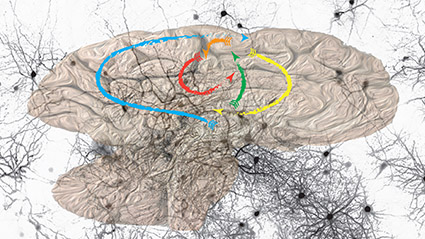How does the brain learn by talking to itself?
10 January 2019

UNIGE scientists uncover the role of synaptic feedback systems in shaping learning processes in the brain’s cortex – a discovery that may prove valuable for developing efficient artificial intelligence.
Human beings, like other animals, possess an enormous learning capacity that allows for the apprehension of new sensory information to master new skills or to adapt to an ever-changing environment. However, many of the mechanisms that enable us to learn remain poorly understood. One of the greatest challenges of systems neuroscience is to explain how synaptic connections change to support adaptive behaviors. Neuroscientists at the University of Geneva (UNIGE), Switzerland, previously showed that synaptic learning mechanisms in the brain’s cortex are dependent on feedback from deeper brain regions. They have now precisely deciphered how this feedback gates synaptic strengthening by switching on and off particular inhibitory neurons. This study, which can be read in Neuron, not only constitutes an important milestone in our understanding of the mechanisms for perceptual learning but may also offer insight into computerized learning systems and artificial intelligence.
The cortex – the brain’s outer and largest region – is important for higher cognitive functions, complex behaviours, perception, and learning. Upon the arrival of a sensory stimulus, the cortex processes and filters its information before it passes the most relevant aspects on to other brain regions. Some of these brain regions, in turn, send information back to the cortex. These loops, known as “feedback systems”, are thought to be essential for the functioning of cortical networks and their adaptation to new sensory information. “For perceptual learning – which is the improved ability to respond to a sensory stimulus – neuronal circuits need to first assess the importance of the incoming sensory information and then refine the way it is processed in the future. Feedback systems to a degree confirm that those synapses that were responsible for transmitting the information to other brain areas did this correctly”, explains Anthony Holtmaat, professor in basic neurosciences at the UNIGE Faculty of Medicine, who directed this study.
[…] Read the complete article English version > and its French version >
Author : Anthony Holtmaat, UNIGE
Reference :
Williams LE, Holtmaat A;
Higher-order thalamocortical inputs gate synaptic long-term potentiation via disinhibition.
Neuron 101(1):91-102.e4, Jan 2019. doi: 10.1016/j.neuron.2018.10.049 >
